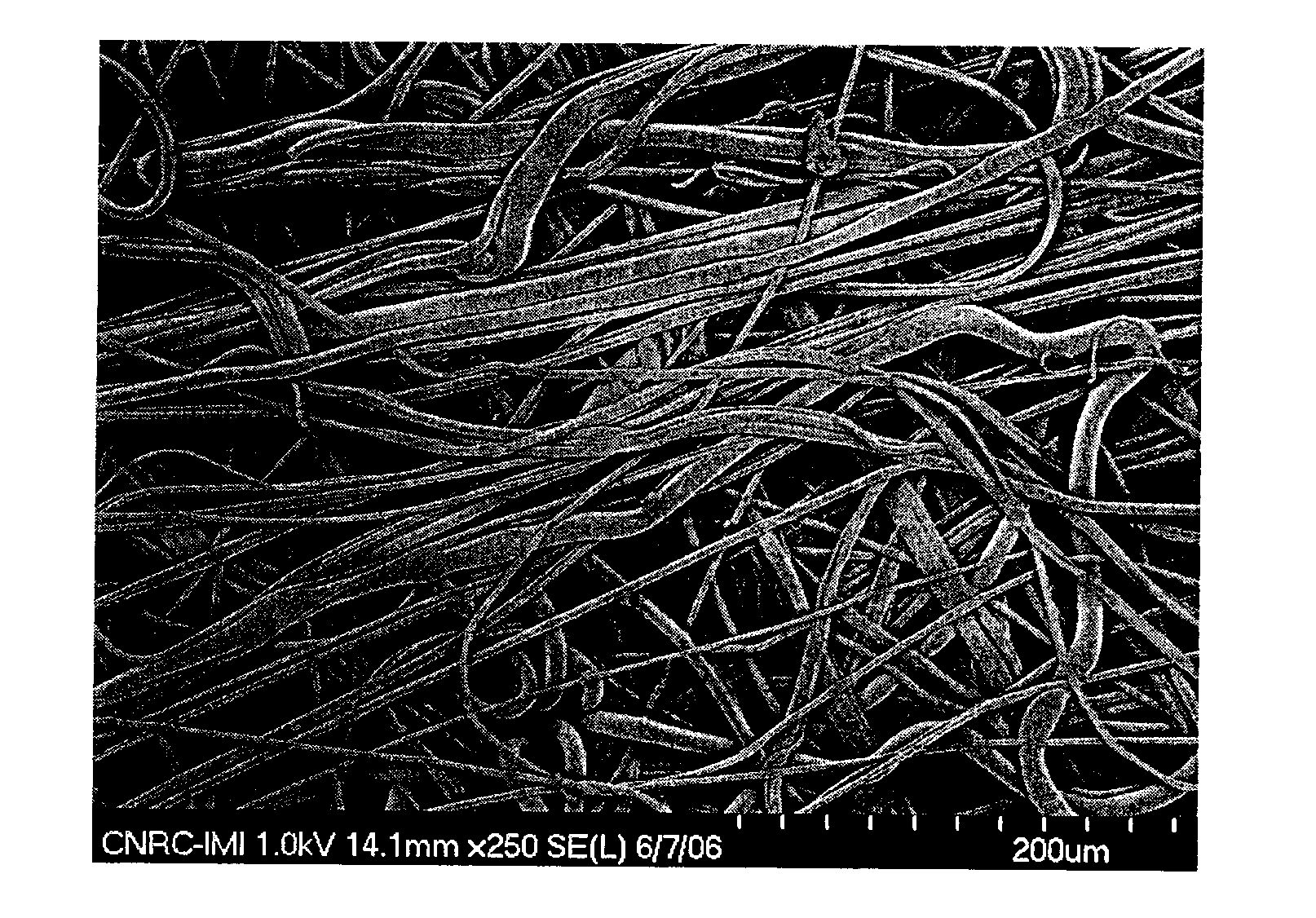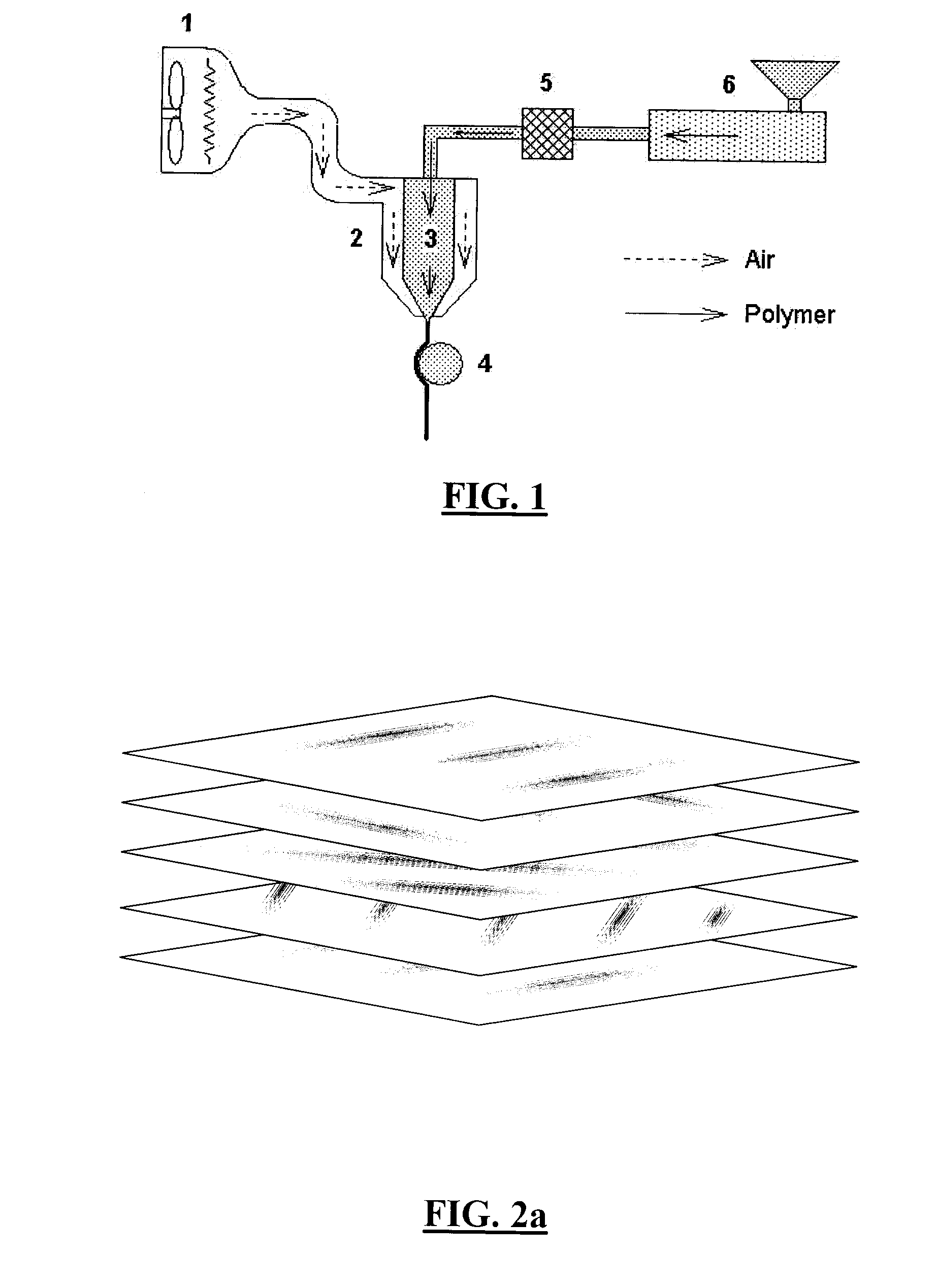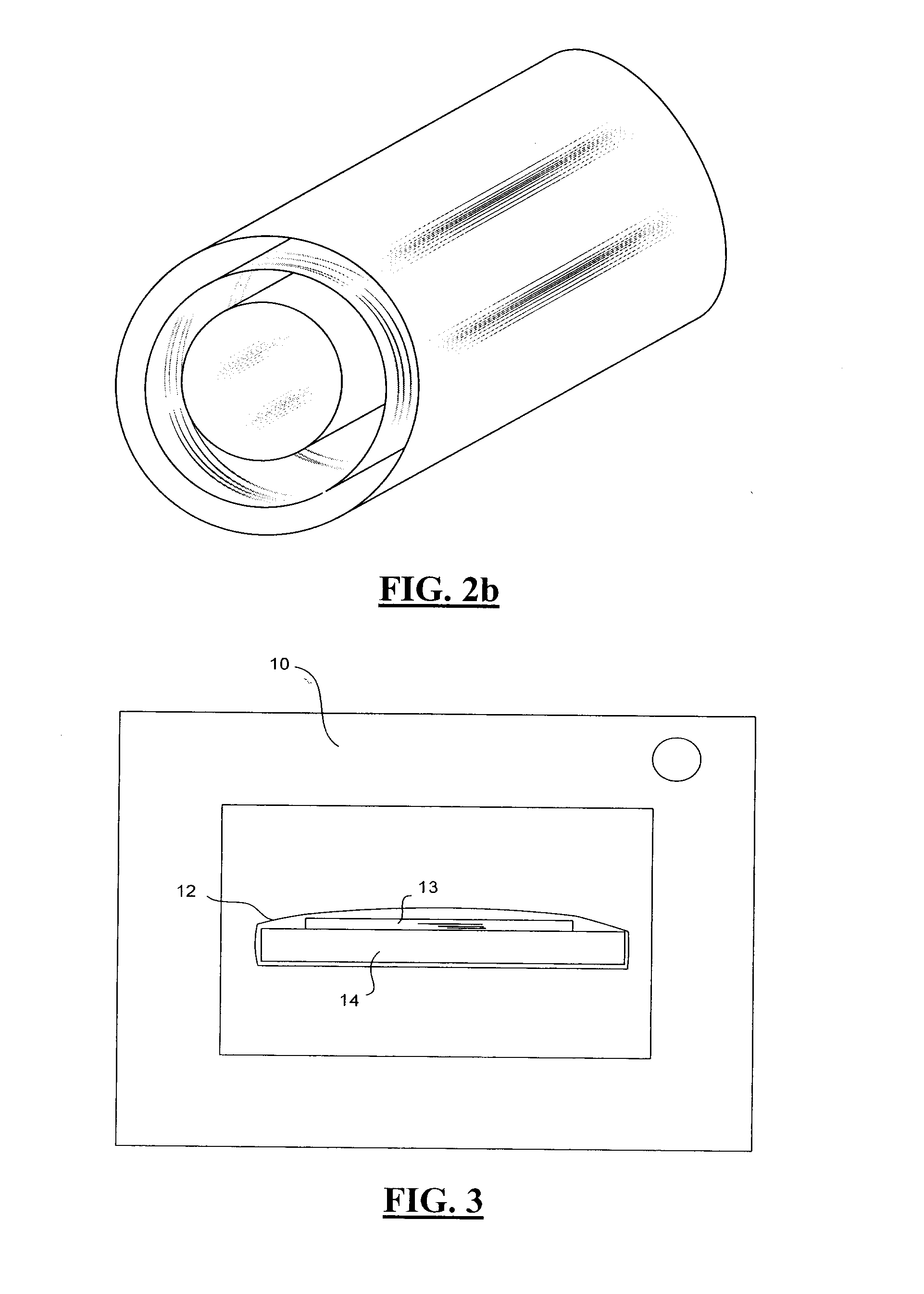Non-woven mat and metho of producing same
a technology of non-woven mats and metho, which is applied in the field of non-woven mats, can solve the problems of limiting cell adhesion, cell growth, and not showing the advantages of producing a narrow porosity distribution, and achieves the effect of facilitating cell ingrowth and facilitating continued vasodilatation
- Summary
- Abstract
- Description
- Claims
- Application Information
AI Technical Summary
Benefits of technology
Problems solved by technology
Method used
Image
Examples
first example
[0069]Both planar mats and cylindrical mats were prepared for mechanical testing. The planar mats were produced by stacking various numbers of individual webs onto a planar aluminum plaque. The webs were stacked by hand under minimal tension and trimmed to produce coupons of a size 20 cm×20 cm for planar mats. The mat thickness depended on the number of webs stacked and was about 100 μm for 20 layers. The plaques were then placed in pressurized bags and, by evacuating the air in the bags, an even vacuum pressure was applied to the coupons. The vacuum bag was placed in an oven at 90° C. for 30 minutes.
second example
[0070]Cylindrical mats, of about 30 cm in length, were produced on a 6-mm diameter mandrel from 20 W1 webs with alternating orientations. Each web was laid on the mandrel and cut so that edges of the web substantially abutted each other defining a seam. The seams of adjacent webs were not aligned to prevent a weakness from being defined throughout the cylindrical stacks. The mandrel was then inserted into an autoclave for 30 minutes exposing the cylindrical stacks to 90° C. and a pressure of 50 psi for 30 minutes.
third example
[0071]A third example of mat forming involved applying a slightly different pressure and temperature regime, and was found to provide better bonding. The temperature was marginally raised to 100° C., for a slightly shorter duration of 20 minutes, with under vacuum conditions (i.e. the mat is subjected to a pressure of about 14.7 psi).
[0072]These forming conditions were applied to produce cylindrical mats. Pressure was applied using a vacuum bag method which substantially reduced the defects caused by the wrinkling of the bag along the two opposite sides of the bag where the inner surface of the bag meets itself to form a seam. As will be appreciated, the pressure applied to the mat along this seam is less, and there is a tendency for the pressure to nip the material rather than press it toward the mandrel. The pressure along the seam was significantly improved by surrounding the mat with a thermoplastic film, which served as a bleeding layer for the compression, improving the unifor...
PUM
| Property | Measurement | Unit |
|---|---|---|
| Length | aaaaa | aaaaa |
| Fraction | aaaaa | aaaaa |
| Fraction | aaaaa | aaaaa |
Abstract
Description
Claims
Application Information
 Login to View More
Login to View More - R&D
- Intellectual Property
- Life Sciences
- Materials
- Tech Scout
- Unparalleled Data Quality
- Higher Quality Content
- 60% Fewer Hallucinations
Browse by: Latest US Patents, China's latest patents, Technical Efficacy Thesaurus, Application Domain, Technology Topic, Popular Technical Reports.
© 2025 PatSnap. All rights reserved.Legal|Privacy policy|Modern Slavery Act Transparency Statement|Sitemap|About US| Contact US: help@patsnap.com



